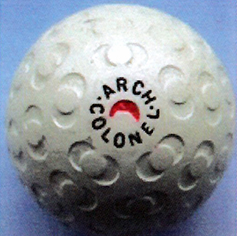Golf's Historic Tournaments:
Majors - Men


Eras of Golf Ball Collecting
Featheries Pre-1848 Era
Before the invention of the gutta percha ball in 1848, balls were made of leather pouches stuffed with feathers that were soaked in brine. When the feathers dried, the ball was very hard and sturdy, at least for a time. They were difficult to make and expensive. Balls were generally stamped with the maker’s name and weight of the ball. Highly collectible names include Gourlay, McEwan, and Allan. Such balls, in good condition, regularly fetch enormous sums at auction. Collecting such balls requires knowledge and expertise to determine worth and authenticity.
Eras of Golf Ball Collecting
Gutta Percha 1848-1902 Era
Discovered by chance as a useful substance for golf balls, gutta percha balls in their early years are highly desired by collectors. The early balls were smooth and flew erratically. Golfers then discovered that the scratches, dents and injuries delivered to these balls actually straightened their flight. Thus began decades of exploration in surface manipulation with grooves, dimples, pimples (called brambles), mesh, and any number of other patterns. Collectors of gutta percha balls rate them according to patterns, age, and, of course, condition. As with featheries, auction prices can be in the many thousands of dollars with prized samples going for quite breathtaking sums. Here, too, is the realm of the expert collector. The casual collector would do well to find second or third rate balls in less desirable condition to at least display for their historical value in the evolution of the ball.


Eras of Golf Ball Collecting
Early rubber Core – 1900-1920 Era
Around the turn of the 20th century, the golf ball took another leap forward with the invention of the wound, rubber core ball. Supplanting the gutty over a period of just a few years, the rubber core, or “bounding billy” as the early ball was known, took off, literally, with golfers who discovered its penchant for to add distance to their games. The early balls varied in size and weight. Core materials varied widely as inventors tried almost everything from a hollow core, to compressed air, honey, steel, a radioactive substance, and, in one bizarre instance, the pizzle (penis) of a bull! Yes, you read that right. Such were the many patterns, weights, cores, that collecting balls from this period involves much research to understand the many patents and varieties. It is a particularly rich period for collectors and balls can be found ranging from reasonable prices to very high for prized and rare patent balls.
